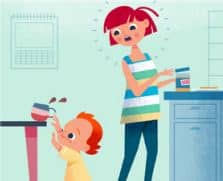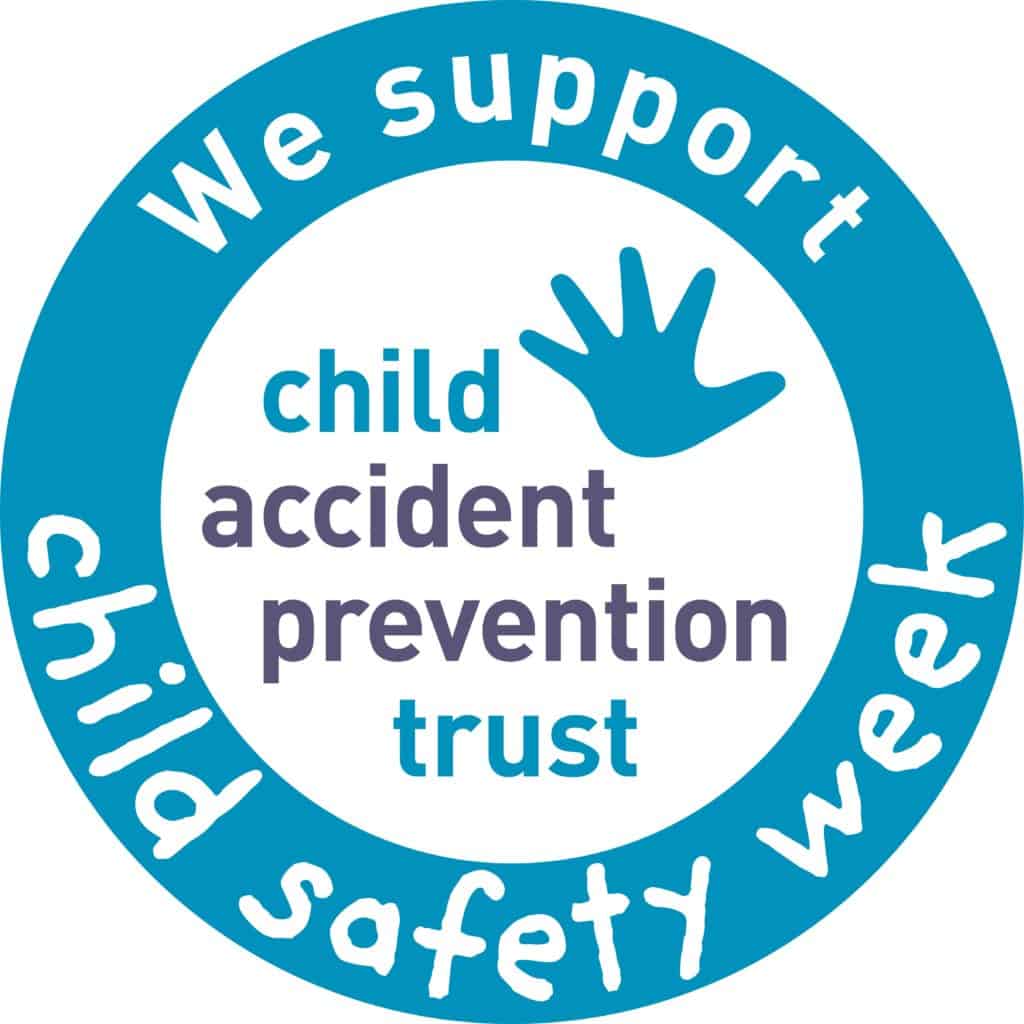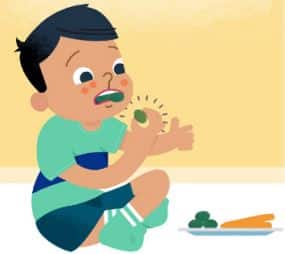Looking after small children is never easy and it’s difficult to keep your eye on them for every single second, but there are some simple ways to keep your child safe. No home can be completely ‘child proofed’ but the Child Accident Protection Trust factsheets can help you look for potential risks in your home and help you avoid accidents.
Under-5s are particularly at risk of being injured in home accidents, with falls accounting for the majority of non-fatal accidents and threats to breathing such as suffocation, strangulation and choking causing the highest number of deaths. Most home accidents are preventable through increased awareness, improvements in the home environment and greater product safety. – ROSPA
The largest number of accidents happen in the living/dining room. However, the most serious accidents happen in the kitchen and on the stairs. Every year more than 67,000 children experience an accident in the kitchen – 43,000 of these are aged between 0-4 years; 58,000 children have accidents on the stairs.
- 0-4-year-olds have the most accidents at home.
- Boys are more likely to have accidents than girls
Here are a few things to take a think about at in your home but please do DOWNLOAD the CAPT parent factsheets
If a big, powerful lithium coin cell battery – a thin button battery like a 5 pence piece – gets stuck in a child’s food pipe, it can cause catastrophic internal bleeding and even death.
So it’s important to keep any objects with easily accessible lithium coin cell batteries out of children’s reach, as well as spare and even ‘flat’ batteries, and to act fast if you think your child may have swallowed one. Find out more about button battery safety here.
Poisoning
Bright bottles of cleaning liquid, squidgy washing tablets, shiny packets of painkillers. Small children are curious and want to learn more by putting things in their mouth. Unfortunately things that make our lives easier can be harmful to small children, as their bodies process poisons differently. Thank goodness it’s easy to keep children safe.
“He thought it was a sweetie because it was bright and like a jelly so he gave it to Orla who bit into it”.
Mum talking about washing tabs/pods
It can be easy to forget that the products that we use everyday are so dangerous to children. Things to watch out for, put away in locked cupboards and on high shelves are:
- Laundry products
- Cleaning products – helpful for you but they can be harmful for small children.
- Everyday painkillers – the most common way for young children to be poisoned.
Safe from Burns
A small child’s skin burns really easily as it’s so thin. Here’s how to prevent serious burns:

Mum of little boy burned by a hot drink
- Hot drinks – stay hot enough to scald a small child even after 15 minutes. 8 to 18 month-olds are most vulnerable as they love to grab.
- Hair straighteners – can get as hot as your iron and can still burn 15 minutes after they are switched off.
- Button batteries – if a child swallows a lithium coin cell battery (the round silver battery like a 5p coin) and it gets stuck in their food pipe, it can burn a hole and cause internal bleeding and even death.
- Magnetic toys – high-strength magnets in toys can burn through the gut if your child swallows them.
- Cooking – young children don’t automatically pull away from something that’s burning them. They may forget the rules about not touching hot things.
- Bath water – these scalds are really nasty and can happen in seconds.
- Fires and heaters – a risk to small children.
- Move cots away from radiators. Then your baby can’t get their arm or leg trapped against the heat.
- Fit fireguards around fires and heaters.
Breathe Easy
“He would have been much too young and would have been much too weak to release himself.”
Coroner’s report, blind cord strangulation
Such a scary thought that something could stop your child breathing. But, the steps to stop that happening are simple.
- Window blinds – it can take just 20 seconds for a toddler to die from strangulation with an unsafe window blind cord.
- Sleeping and slings – babies can be suffocated by things they can’t push away.
- Nappy sacks – young babies naturally grasp things and pull them to their mouths, but aren’t able to pull them away. They can suffocate on flimsy nappy sacks.
- Choking – babies and young children are still learning to chew, swallow and breathe in the right order. There’s no sound to warn you. But there are simple ways to stop it happening.
Shockingly, around two children every year are strangled to death after becoming entangled with a corded blind.It can take just 15 seconds for a toddler to lose consciousness if a blind cord is caught around their neck – and they can die in just two to three minutes.
Toddlers and young children are at the greatest risk of being killed or injured by window blind pull cords. This is because:
- They may love to climb but not understand they’re at risk of a fall when they climb onto furniture
- If they wobble, they may not have learned how to steady themselves
- Proportionally their heads weigh more than their bodies – and their muscle control isn’t fully developed. This means it’s hard for them to free themselves if they’re caught in a blind cord
- A young child’s windpipe is narrow and soft so they can suffocate very quickly when their necks are constricted.
As children develop, they can climb onto furniture and might be able to reach higher than you might expect.
How to make blind cords safe
- For peace of mind, you might consider buying blinds without cords or chains, particularly for children’s bedrooms
- If you already have blinds with cords in your home, you can check they’re fitted with a tensioner or cleat hook to keep cords out reach. New blinds come with these included
- Cords should be tied so they can’t be reached by children every time you open or close the blinds
- The back of a Roman blind should be connected with a safety device for blind cords that will break under pressure.
It’s a good idea to move cots, beds, highchairs and playpens away from looped blind cords – and if there’s space, try to move other furniture away from them as young children love to climb.
Also be mindful of window blind cord dangers in other places where your children spend time, such as the homes of childminders and grandparents, friends or family.
Read more about keeping blinds safe in your home from Make it Safe
High-risk toys
Online shopping can make life easier. But, some cheap toys from online marketplaces can be deadly, as Dr Punam Krishan explains.
High-risk toys best avoided from unknown brands and sellers include those with:
• Super-strong magnets that can rip through your child’s belly
• Easy-access button batteries that can kill your child if swallowed
• Long cords that can strangle your child or small parts that can choke them
• Chargers that can catch fire or wires that can cause electric shocks
To learn more about dangerous toys please visit the CAPT Buy Safe Toys hub.
Visit the Child Accident Trust Website to find out more safety information
Visit our Safety in the home Webpage to find out more about keeping your family safe




